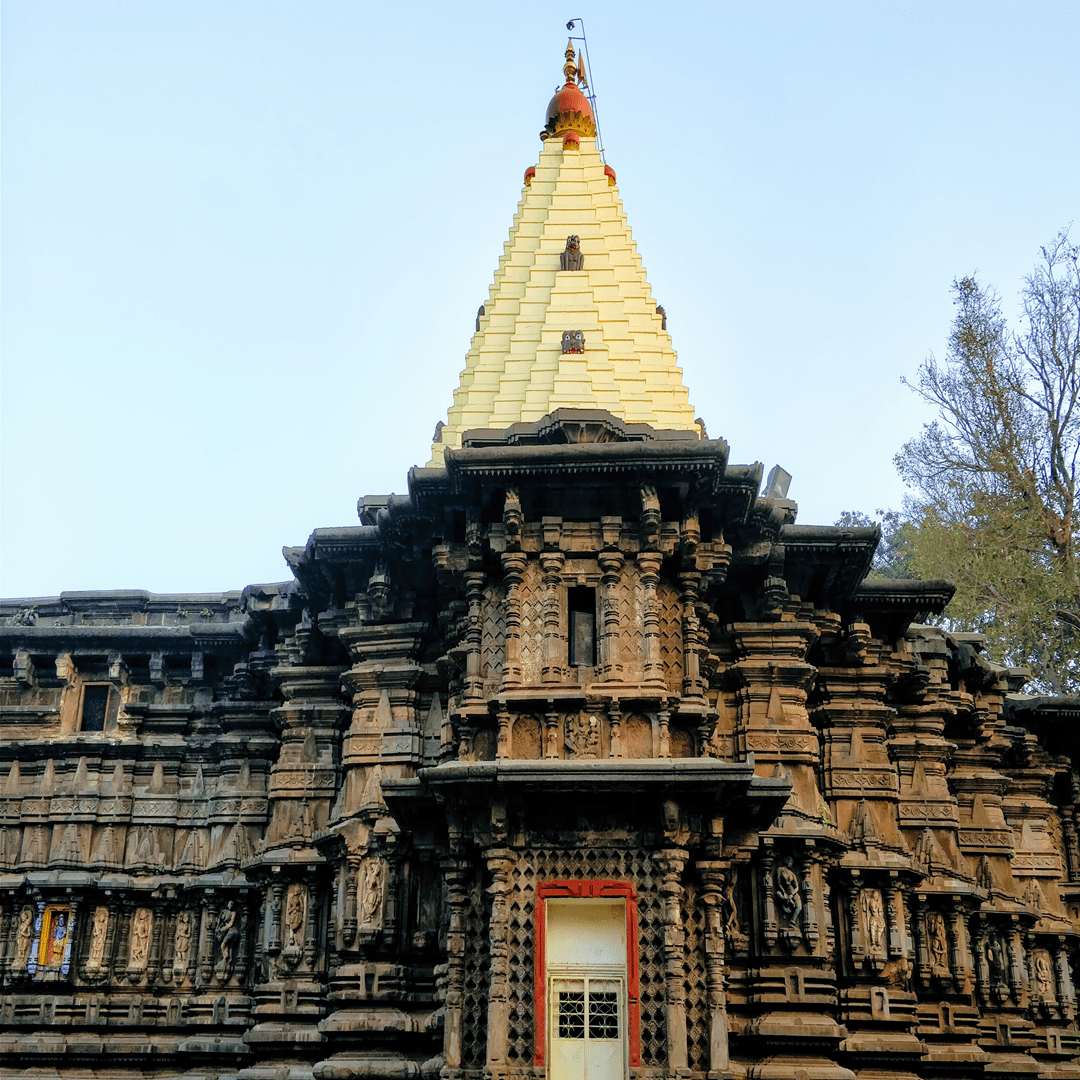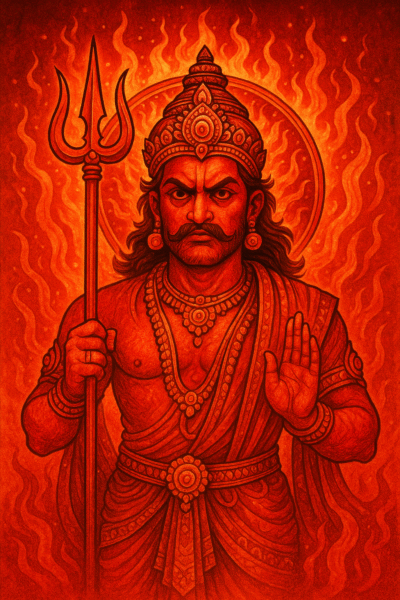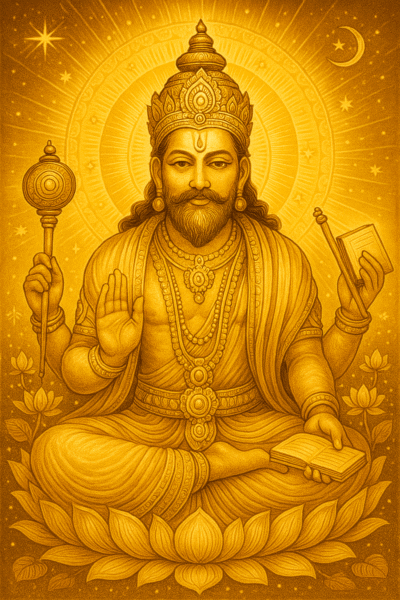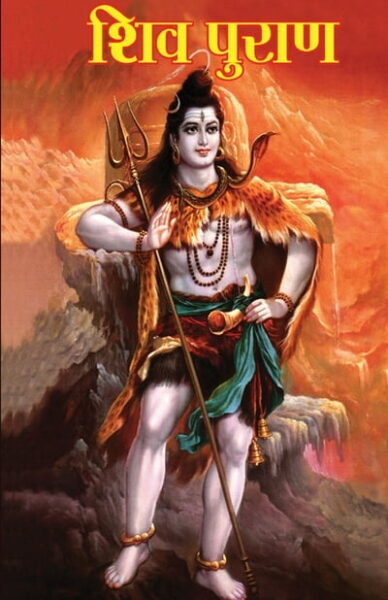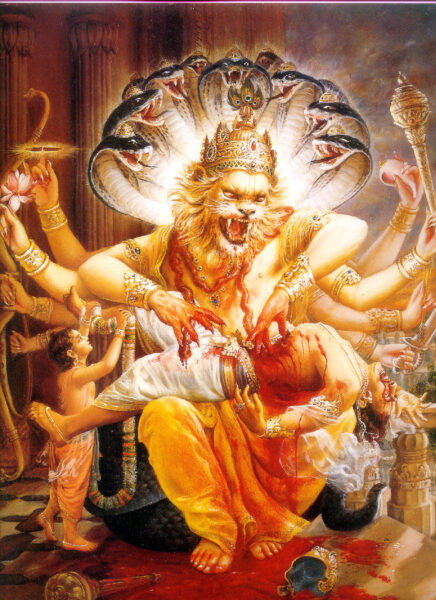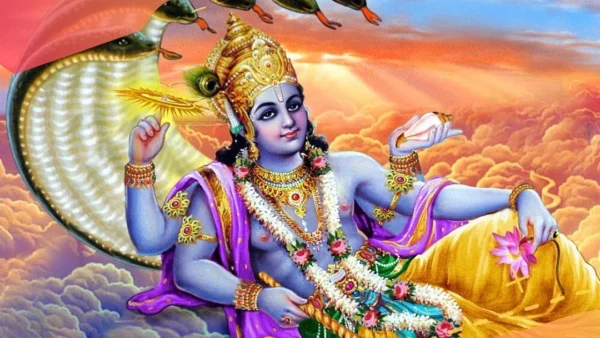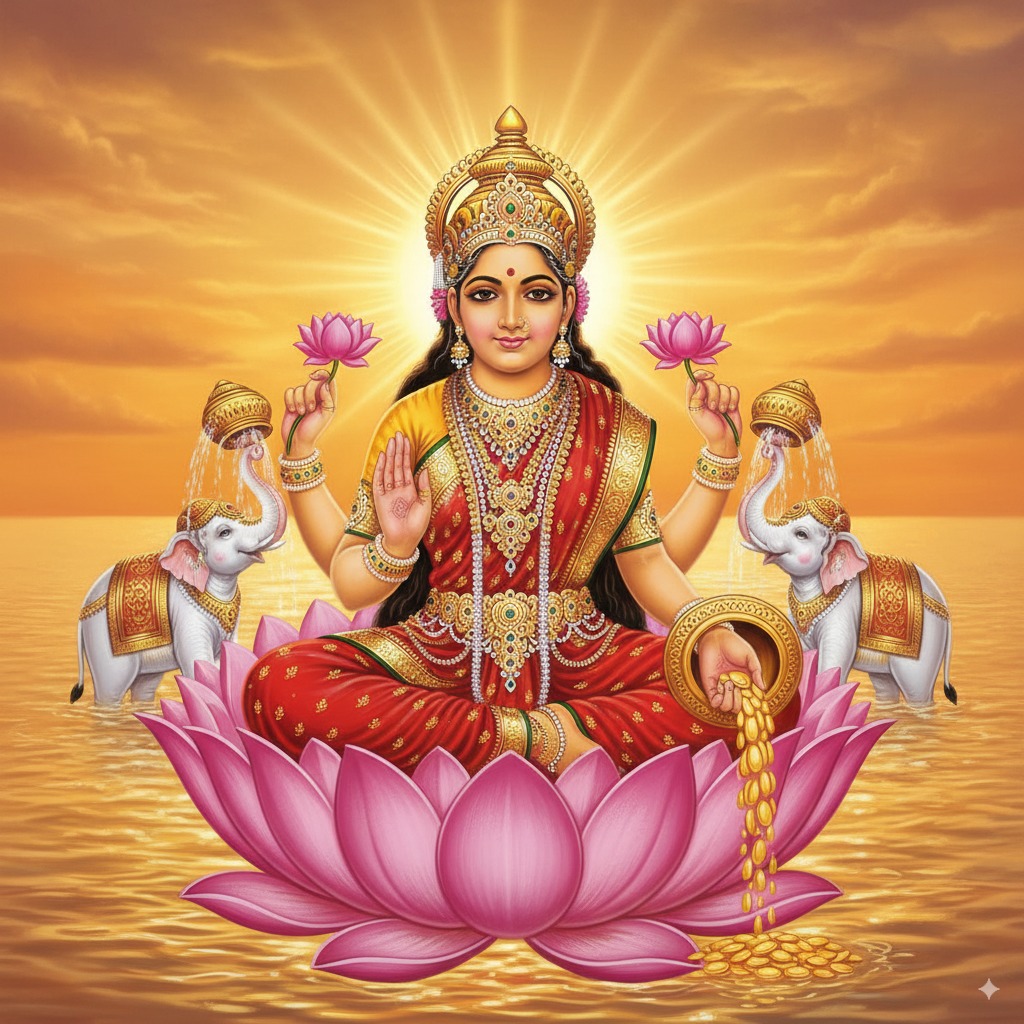Introduction
The Mahalaxmi Temple in Kolhapur, Maharashtra, stands as one of India's most revered and ancient temples, dedicated to Goddess Mahalaxmi, the divine embodiment of wealth, prosperity, and cosmic power. Also known as Ambabai Mandir by locals, this sacred shrine is recognized as one of the 18 Maha Shakti Peethas mentioned in Hindu scriptures and holds the distinction of being among Maharashtra's four major Shakti Peethas. Located on the banks of the sacred Panchganga River, the temple draws millions of devotees annually who seek blessings from Goddess Mahalaxmi, affectionately called Ambabai, meaning the divine mother.
This architectural marvel from the 7th century CE represents a perfect blend of spirituality, history, and artistic grandeur. The temple is believed to mark the sacred spot where Goddess Sati's eyes fell, making it a site of profound spiritual significance. According to legend, Goddess Mahalaxmi defeated the demon Kolhasura at this very location, lending the city its name - Kolhapur, meaning "the city of Kolhasura". The temple's unique celestial phenomenon called Kiranotsav, where the setting sun's rays illuminate the deity's face, exemplifies the architectural brilliance of ancient builders.
Historical Significance
The Mahalaxmi Temple has a rich historical legacy spanning over 1300 years. Built originally in the 7th century CE by Chalukya ruler King Karnadeva around 634 CE, the temple has witnessed the rise and fall of numerous dynasties. Archaeological evidence and epigraphic references place the deity's presence in the 7th century, while the current temple structure dates back to the 10th century CE.
Throughout its illustrious history, the temple received patronage from various ruling dynasties including the Chalukyas, Shilaharas, Rashtrakutas, Yadavas, and later the Marathas. The Shilahara king Bhoja II's 1182 CE inscription, preserved at the Hari-Hareshvara shrine within the temple premises, records his donations and the boon he obtained from Mahalaxmi. The Yadava king Tolum built the Mahadwar in 1218 CE and offered precious jewels to the deity.
A significant chapter in the temple's history occurred when it fell out of worship for a period, and the deity's image was housed elsewhere. Worship was restored in 1715 after the Marathas rose to power, marking 300 years of continuous worship as celebrated in 2015. The temple also received generous contributions from Maharani Ahilyabai Holkar in the 18th century for renovation and restoration.
Architectural Marvel
The Mahalaxmi Temple showcases exceptional Hemadpanti architectural style, a distinctive blend of Nagara and Dravidian influences characterized by intricate stone carvings and robust mortarless construction. This architectural technique, echoing the style of early Deccan temples, creates a rich light and shade pattern through horizontal moldings and vertical offsets.
The temple complex consists of five magnificent towers and a main hall, with the largest spire positioned above the sanctum housing Goddess Mahalaxmi. The North and South domes house Goddess Mahakali and Mahasaraswati respectively, while the temple also houses a sacred Shree Yantra that geometrically represents the three goddesses. The temple premises are enclosed by strong masonry walls with four main entrances, the primary one being the western Mahadwaar, believed to have been built by Sri Adi Shankaracharya himself.
The sanctum sanctorum features a remarkable three-foot-tall black stone idol of Goddess Mahalaxmi, weighing 40 kilograms and crafted as a monolithic structure embedded with precious stones and diamonds. The deity is adorned with a gemstone-studded crown featuring a five-headed serpent and holds symbolic items: a Matulinga fruit, a mace, a shield, and a drinking bowl. A majestic stone lion, the vahana (vehicle) of the goddess, stands behind the idol, symbolizing strength and courage.
The temple complex includes numerous subsidiary shrines dedicated to various deities including the Navagrahas, Lord Surya, Mahishasuramardini, Vitthal-Rakhmai, Shiva, Vishnu, and Tulja Bhavani. The sacred Manikarnika Kund tank is located in the courtyard, on whose bank stands a shrine to Visweshwar Mahadev. The Garuda Mandap with square pillars and foliated arches represents typical Maratha temple architecture from the 18th century.
The Divine Phenomenon - Kiranotsav
One of the temple's most captivating features is the Kiranotsav (Festival of Rays), a celestial phenomenon occurring twice annually when the setting sun's rays align perfectly to illuminate the deity's face through a small window. This architectural marvel demonstrates the incredible precision of ancient builders who designed the temple to capture this divine moment.
The phenomenon takes place for three consecutive days during two specific periods each year: January 31st to February 2nd and November 9th to 11th. During these sacred moments, thousands of devotees gather to witness the spectacular sight of golden sunrays bathing the goddess in divine light, symbolizing the cosmic energy merging with earthly devotion. The rays travel from above the historic Sandhyamath structure located in Rankala Lake, situated one and a half kilometers from the temple.
Spiritual Significance and Beliefs
The Mahalaxmi Temple holds immense spiritual significance as one of the most powerful Shakti Peethas, representing cosmic feminine energy. According to Hindu mythology, this temple marks the sacred spot where Goddess Sati's three eyes fell when Lord Vishnu severed her body to pacify Lord Shiva's grief. This divine occurrence is believed to have imbued the site with extraordinary spiritual power.
The Karavira Mahatmya mentions that Lord Vishnu resides in the form of Mahalaxmi at Kolhapur, emphasizing the temple's connection to the divine couple. Legend states that Goddess Mahalaxmi destroyed the demon Kolhasura at this location, and the spot of his death became a sacred thirtha (pilgrimage site). The temple is considered spiritually significant when visited along with the Tirumala Balaji Temple and Padmavathi Temple, as this holy trio is believed to ensure salvation for the soul.
Devotees firmly believe that prayers offered at this temple bestow blessings of prosperity, health, marital harmony, and the removal of evil energies. Many pilgrims visit seeking solutions to personal, financial, and health-related problems, considering the goddess as a benevolent mother whose blessings ensure well-being and abundance. The temple is particularly renowned for fulfilling devotees' desires while also providing salvation from worldly attachments.
Daily Rituals and Temple Schedule
The Mahalaxmi Temple follows a meticulously organized daily schedule of rituals and prayers that maintain the sacred atmosphere throughout the day. The temple opens at 4:00 AM and closes at 10:30 PM, providing ample opportunity for devotees to participate in various ceremonies.
The daily ritual schedule includes:
- 4:30 AM - Padyapuja & Mukhmarjan (awakening of the deity)
- 5:30 AM - Kakad Aarti with devotional songs in 'Bhup-Rag'
- 8:00 AM - Morning Mahapuja with Shodashopachara (16-element worship)
- 9:30 AM - Naivedya (food offering) and Aarti
- 11:30 AM - Afternoon Mahapuja
- 1:30 PM - Alankar Pooja (ornament worship)
- 8:00 PM - Dhuparti (evening aarti)
- 10:00 PM - Shejarti (final aarti before rest)
The rituals involve Panchamrut Abhishek (anointing with curd, milk, honey, ghee, and sugar) accompanied by Vedic chants. The temple resonates with the melodious sound of bells rung at specific times - 4:30 AM, 8:30 AM, 11:30 AM, 7:30 PM, and 9:30 PM - to inform devotees of the upcoming ceremonies.
Major Festivals and Celebrations
The Mahalaxmi Temple comes alive during various festivals throughout the year, with Sharadiya Navratri being the most celebrated. This nine-night festival, welcoming the winter season, transforms the temple into a hub of devotion with music, dance, and grand processions. During Navratri, special rituals are performed at 8:30 AM and 11:30 AM, followed by Mahanevedya (holy food offering) and aarti.
Key festivals celebrated include:
- Rathotsav - Annual chariot festival on Chaitra Shudda Pournima (April) featuring a silver chariot adorned with flowers and lights
- Lalita Panchami - Fifth day of Navratri when the goddess visits Tryamboli temple with special processions
- Kiranotsav - Celestial phenomenon celebrated twice yearly when sun rays illuminate the deity
- Vijaya Dashami - Celebrated under royal patronage with the goddess visiting Dasara Chowk and Panchaganga River
- Tripuri Pournima - Festival of lights featuring chariot procession and fireworks
During festivals, the temple organizes Palakhee Sohala (palanquin procession) every Friday at 9:30 PM, performed for nine days during Navratri. These celebrations include police and military band accompaniments, creating a grand spectacle that attracts thousands of devotees.
Location and Accessibility
The Mahalaxmi Temple is strategically located in the heart of Kolhapur city at Mahadwar Road, B Ward, C Ward, Kolhapur-416012, Maharashtra. The temple is easily accessible and well-connected to major cities, being situated on the national highway between Bangalore and Pune, approximately 240 kilometers south of Pune.
The temple premises feature four main entrances for easy accessibility, with the western Mahadwaar serving as the primary entrance. The complex is surrounded by strong masonry walls and includes various subsidiary temples and facilities for pilgrims. Adequate resting places are provided within the premises for devotees visiting from distant locations.
For inquiries and assistance, devotees can contact the temple administration:
- Phone: 0231-2541779
- Email: dmckolhapur@gmail.com
- Fax: 0231-2626750
The temple is wheelchair accessible and provides facilities for differently-abled devotees. Various accommodation options, including dharamshalas, are available in the vicinity for pilgrims planning extended stays.
Visitor Information and Guidelines
The temple welcomes devotees from 4:00 AM to 10:30 PM daily, with the outer doors closing at 11:00 PM. The best time to visit for a peaceful darshan experience is during early morning hours (5:00 AM - 8:00 AM) or evening hours (7:00 PM - 10:00 PM) when crowds are relatively smaller.
Important visitor guidelines:
- Devotees are expected to dress modestly and appropriately according to cultural traditions
- Photography may be restricted in certain areas of the temple
- Special darshan and pooja tickets can be booked online through the official website
- Tuesday and Friday typically see larger crowds, so plan accordingly
- During festival seasons, especially Navratri and Kiranotsav, expect significant crowds
The temple provides various seva options including abhishek (ritual bathing of the deity), alankar (decoration), and naivedya (food offerings) for devotees wishing to participate in special worship. Online booking facilities are available for darshan passes and special pujas through the official temple website, making it convenient for devotees to plan their visit in advance.

